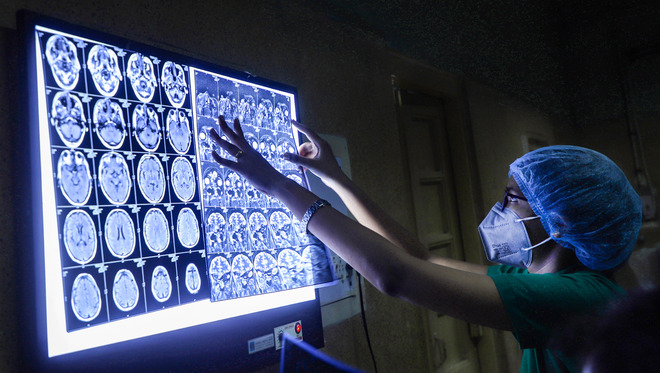
Meet black fungus, Covid’s partner in crime
Our Correspondent
Hoshiarpur, May 21
“Having second largest diabetic population globally and nearly 70 per cent of these cases being those of uncontrolled diabetes, India has a strong risk factor for mucormycosis or black fungus.”
Dr Navdeep Kaur Boparai, ENT expert at Ivy Hospital, addressing an online awareness programme, said that second Covid wave has been worse than the first and has led to the increase in usage of steroid, which not only worsens the sugar control but also increases the risk of developing mucormycosis.
She added that most of the hospitalised patients require oxygen and contaminated cylinders, humidifiers, steamers which are becoming a potential source for the infection.
Poor oral-nasal hygiene in hospitalised patients and use of the same mask for prolonged periods is also becoming a cause for mucormycosis. The major route of infection is via inhalation of conidia and other routes include ingestion and traumatic, she said.
“When spores are deposited in the nasal turbinate the rhino cerebral disease develops. When spores are inhaled into the lungs the pulmonary disease develops, when ingested the GI disease ensues, and when these agents are introduced through interrupted skin, cutaneous disease develops.”
Dr Navdeep said infection spreads along vascular and neuronal structures and infiltrates into the walls of blood vessels. It can erode bone through walls of the sinus and can spread into the orbit and the retro-orbital area, thereby extending into the brain. “We are witnessing patients with foul smelling nasal discharge, nasal stuffiness, nasal bleed, nasal hypoesthesia, headache, nausea, fever and lethargy,” she pointed out.
All cases of post-Covid infection with such symptoms should be subjected to imaging to confirm sinus involvement and beyond.
She said symptoms of pulmonary (lung) mucormycosis include fever, cough, chest pain and shortness of breath. The symptoms of gastrointestinal mucormycosis include abdominal pain, nausea and vomiting and gastrointestinal bleeding.
Disseminated mucormycosis typically occurs in people who are already sick from other medical conditions, so it can be difficult to know which symptoms are related to mucormycosis.
The disease is clinically fatal as no survivors of mucormycosis were reported before 1955. A review of published mucormycosis cases found an overall mortality rate of 54 per cent. The mortality rate was 46 per cent among people with sinus infections, 76 per cent for pulmonary infections and 96 per cent for disseminated mucormycosis.
The prognosis of mucormycosis may improve with rapid diagnosis, early management, including combined antifungal drugs, aggressive surgical interventions and reversal of underlying risk factors. “Let us all fight this pandemic and the menace of mucormycosis collectively,” the doctor remarked.
What is black fungus?
The black fungus infection, also known as mucormycosis, is caused by a fungus called mucor. Recently, several states have flagged cases of Covid-triggered mucormycosis, especially among patients who are diabetic.
Mighty mucormycosis
The disease is clinically fatal as no survivors of mucormycosis were reported before 1955. A review of published mucormycosis cases found an overall mortality rate of 54 per cent. The mortality rate was 46 per cent among people with sinus infections, 76 per cent for pulmonary infections and 96 per cent for disseminated mucormycosis.
Stay connected with us on social media platform for instant update click here to join our Twitter, & Facebook
We are now on Telegram. Click here to join our channel (@TechiUpdate) and stay updated with the latest Technology headlines.
For all the latest Health News Click Here
For the latest news and updates, follow us on Google News.

